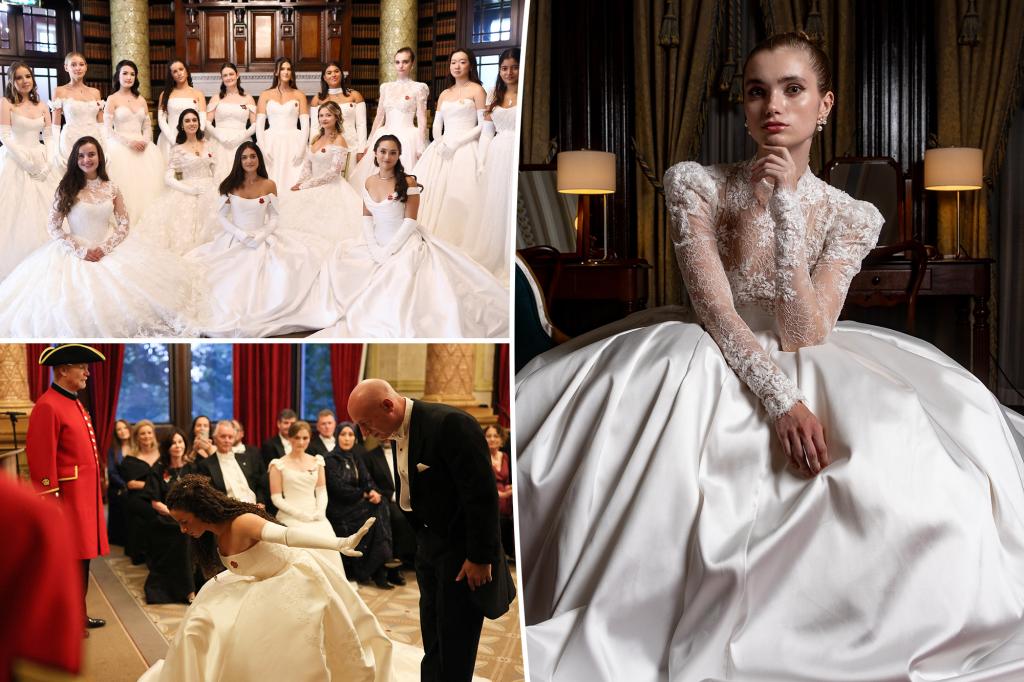Modern Debut: The Elegance and Evolution of Queen Charlotte’s Ball
In a spectacle reminiscent of a scene from “Bridgerton,” London’s annual Queen Charlotte’s Ball continues to dazzle with its display of tradition and opulence. This past Saturday, young women aged 16 to 21 transformed into visions of elegance, adorned in pristine white ballgowns, sparkling tiaras, and diamond jewelry. The grand affair, steeped in aristocratic heritage, saw these debutantes accompanied by well-bred young men for an evening of dance and refined celebration. While the visual splendor remains unchanged, the purpose and meaning behind this elaborate social ritual have evolved significantly over the years, reflecting broader changes in society’s values and expectations.
Originally, Queen Charlotte’s Ball served a distinctly matrimonial purpose. The event functioned as a sophisticated matchmaking platform where young women from affluent backgrounds were formally “presented” to society—and most importantly, to eligible bachelors of similar social standing. These debutantes, having reached marriageable age, were essentially being introduced to the marriage market with royal approval. This tradition of presentation to the monarch continued until 1958, when the royal family chose to distance itself from the practice, perhaps recognizing its increasingly outdated nature in post-war Britain. The ball represented a young woman’s official entrance into society, declaring her “out” and ready for courtship and marriage—a formalized system for ensuring appropriate matches within the upper echelons of society.
In 2009, the tradition experienced a renaissance with a contemporary interpretation when The London Season, a non-profit organization, relaunched the gala. Rather than functioning primarily as an elaborate matrimonial marketplace, the modern Queen Charlotte’s Ball pivoted toward philanthropy and personal development. Today’s event ostensibly focuses on raising funds for children in need while offering participants valuable training in social etiquette—skills still prized in certain circles despite changing social norms. The ball’s global expansion beyond London to prestigious venues in Shanghai and Dubai demonstrates its evolution from a strictly British institution to an international celebration of tradition with a charitable purpose.
The selection process for participants remains exclusive, maintaining the event’s air of prestige and selectivity. Potential debutantes must navigate a rigorous interview process, with only twenty young women ultimately receiving invitations. This selectivity preserves the ball’s status as a marker of social distinction, even as its explicit purpose has shifted away from marriage arrangements. The continued appeal of such traditions reveals a fascinating tension in contemporary society—while openly aristocratic customs may seem anachronistic, the desire for social recognition and belonging to exclusive communities persists across generations, albeit in evolving forms.
Beyond the spectacle of debutante balls, wealth and class distinction manifest in subtler ways throughout British society. As education and politics expert Dani Payne explains, class signaling extends far beyond material possessions into behavioral and linguistic territory. Accent remains a powerful class marker in the United Kingdom, but equally important are conversational choices and social etiquette—knowing, for instance, that direct discussions about money and wealth breach unspoken upper-class social codes. These implicit rules of engagement function as cultural gatekeeping mechanisms, distinguishing those raised within privileged circles from outsiders regardless of their current financial status.
Vocabulary and manner of speech serve as particularly potent indicators of social background, with being “well-read and well-spoken” signaling allegiance to established class structures. These linguistic markers reflect educational opportunities and cultural exposure typically available to those from privileged backgrounds. The persistence of such subtle class distinctions alongside more overt traditions like Queen Charlotte’s Ball illustrates the complex nature of social stratification in contemporary society. While the explicit purposes of aristocratic traditions may evolve toward philanthropy and personal development, they continue to function as spaces where class boundaries are maintained and reinforced, even as participants embrace more modern values of charitable giving and female empowerment. The enduring popularity of these traditions reveals our complicated relationship with history—simultaneously critiquing outdated social hierarchies while finding comfort in the continuity and beauty of long-established customs.















